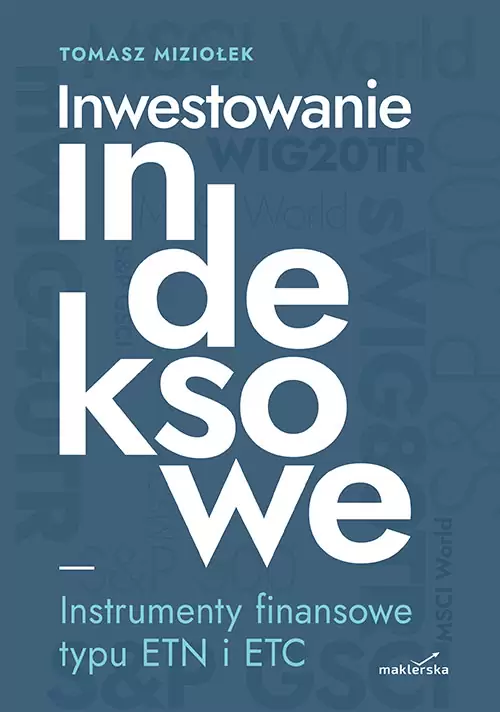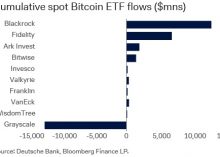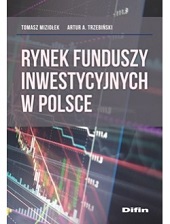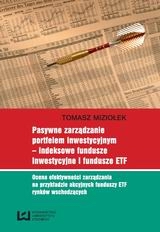Druga część artykułu Francisa Grovesa dotyczącego europejskich ETF-ów i ETC z ekspozycją na rynek żywności i towarów rolnych.
A Staples Investment Diet With ETFs And ETCs, Part 2 of 2
Having looked at ETFs for the food and beverage sector in the first of this pair of articles, this will be a look at how those sector ETFs can be complemented by agricultural exchange traded commodities.
Despite having some reservations about using ETCs*, especially as long term investments, there may be a case for seeing food/agriculture ETFs and agricultural futures ETCs as complementary investments. In particular, holding agricultural ETCs will help when food price inflation takes hold. Conversely, food manufacturers should be experts in the commodity storage business, an area that very few private investors understand despite the impact it has on ETC returns. Granted that ETC investing may seem like pitting your skill against that of companies like Glencore but some combinations of the older established food and agriculture ETFs and ETCs show a good track record over the last three years.
In the agricultural arena the biggest ETC is ETF Securities’ Agri DJ UBSCI ( AIGA:LN ) with an AuM of nearly $1,300 million. The commodity weightings in the DJ UBS Agriculture sub-index are currently, soybeans – 26%, corn – 23%, wheat – 15%, sugar 11%, soybean oil – 10%, coffee – 8% and cotton – 7%. The ETC’s expense ratio is 0.49%. There is also a (3 month) forward futures version of this fund ( FAGR:LN ) with the same commodity weightings and very similar performance. Other Agriculture ETCs are RBS Market Access’s RICI Agriculture fund ( M9SB:GR** ) with a market capitalisation of euro 206 million and EasyETF’s new S&P GSAL fund ( GSAL:FP ). GSAL has a 19% livestock component (live cattle and lean hogs). The weighting of index constituents is based on production levels in the previous five years. The total expense ratios fro AGRI, M9SB and GSAL are 0.65%, 0.70% and an attractive 0.30% respectively. However, having been launched only three months ago, GSAL’s AuM is currently only euro 28 million and trading is thin. The euro denominated ETCs, M9SB and GSAL have performed worse than AGRI, which is dollar denominated, so far this year partly because of the rise in the value of the euro against the dollar. However, AGRI’s performance has been pretty flat.
In the month from early March most agricultural commodity futures were in contango but only slightly so, the exceptions were cotton, which was heavily backwardated, and lean hogs, in pronounced contango***. None of the commodities futures indices tracked by these particular ETCs provide any method for mitigating the effects of contango. However, db x-tracker’s DBLCI-OY fund ( XDBD:LN ) currently has a 30% agricultural commodities component and does attempt to reduce the effect of contango by rolling forwards to the cheapest futures contract available. Launched in November 2008, XDBD has a market capitalisation of $1,668 million.
About a year ago Deutsche Bank extended db x-trackers’ optimum yield offering with a number of ‘booster’ ETCs****, one of which was the db Agriculture Booster ( XCT6:LN ). This ETC has a TER of 0.45% but returns are net of an index charge of 0.70% so these ETCs’ charges are considerably higher than the norm. There are also euro and sterling hedged versions (respectively, XCTF:GR and XCTS:LN) but of the three only XCTR has a sizable market capitalisation – euro 36 million, compared to a mere $9.5 million for XCT6:LN. Although investing without currency hedges seems more straightforward, the size of the London-listed XCT6 seems too low to guarantee its survival and is disappointing after nearly 12 months of trading.
Significantly, the Deutsche’s index information clearly states that the index is conceived on the assumption that the commodity futures tracked won’t be switching backwards and forwards between being in contango and being in backwardation.
Mention should also be made of db S&P GSCI Agriculture ( XET6:LN ) which operates without the benefit of Deutsche’s optimum yield methodology and which also has a low market capitalisation. All of these db ETCs are swap-based and use physical gold as collateral. It’s also worth noting that these products are not perpetual, a maturity date of 2060 has been set.
In the last 10 months the performance of AGRI and all of these db ETCs has been broadly similar with XCT6 and XET6 tending to slightly outperform AGRI nd XCTF. It will be interesting to see if the extra index charges of the optimum yield ETCs will outweigh the benefits to be had from the db roll strategy.
Holdings: db x-tracker DBLCI-OY Fund, Powershares Global Agriculture NASDAQ OMX
*Investors are well-advised to familiarise themselves with the futures roll methodology and the workings of contango/backwardation before investing. For the purposes of these articles the term Exchange Traded Commodity is used not only for ETF Securities’ ETCs but also includes funds that are designated as ETFs by their sponsor/provider but which in fact track the returns of commodity futures indices, such as RBS Market Access’s RICI Agriculture fund.
** Not to be confused with M9SR:GR, RBS Market Access’s S&P GSCI® Capped Component 35/20 2x Inverse Monthly Index ETF
***According to ETF Securities, “Contango Strategies” April 2011.
**** Although these booster ETCs are sometimes associated with db x-trackers, Deutsche seems to want to market them separately. Information can be found at the www.etc.db.com website.
Pierwszą część artykułu Francisa Grovesa dotyczącego funduszy ETF i ETC dających ekspozycję na rynek żywności i towarów rolnych można znaleźć tutaj.
Francis Groves is a researcher and writer on investment topics, based near London, England. His most recent book, 'Exchange Traded Funds, A Concise Guide To ETFs’ was recently published by UK Publisher, Harriman House. This guide covers the essentials of investing with ETFs for financial advisers and serious private investors. Visit http://www.harriman-house.com/exchangetradedfunds to find out more.
Artykuł został przygotowany specjalnie dla serwisu www.etf.com.pl.






Wpis jeszcze nie ma komentarzy.